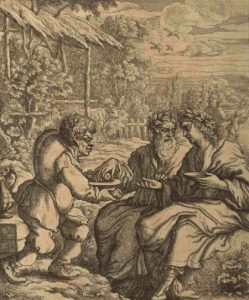
Recently we talked about the Life of Aesop, a biographical novella of the fabulist written around the same time as the gospels: Aesop, Guide to a Very Late Date for the Gospels?; Aesop / 2, a Guide to a Late Gospel of Mark Date; Did Aesop Exist?
This post singles out one more point in Tomas Hãgg’s chapter in The Art of Biography in Antiquity.
Only two of the thirteen stories told by Aesop in the Life are known to have existed before the Roman Imperial period as ‘Aesopic fables’. This, in all likelihood, means that most of the stories were created for use in the particular situations narrated in the novel, or at least adapted for the purpose. . . . [O]ur story is first and foremost a Life, and the fables are narrated not to conserve them or explain them as originating in certain situations, but the other way round: in order to characterize the hero. (pp 116f, my bolding)
Surely the same must be said about the stories told about Jesus in the gospels. It is evident that they are not narrated for conservation purposes. Each evangelist clearly feels free to change many of the sayings and deeds found in, say, the Gospel of Mark.
But there is one detail that is not the same in the stories told about Jesus. That the anecdotes appear for the first time in the gospels is not taken as an indication that they were created for use in the particular situations in the gospels, but that they had an untestable and unverifiable origin as oral traditions. Perhaps classicists should learn from biblical scholars how to generate more scholarly papers about hypothetical origins and traditions.
One classic (I think) illustration of just how neatly tailored a story of Jesus is for the sake of the gospel’s plot was written up in Why the Temple Act of Jesus is almost certainly not historical. That episode has an indisputable narrative function. It is how the synoptic gospels account for the arrest of a man who otherwise provides no reason for his arrest given that he is in every way good and perfect. The Gospel of John removes it as the reason for Jesus’ arrest but has to replace it with the story of the raising of Lazarus to make up for the plot function that would otherwise be lacking. Yet most biblical scholars, devout as most of them reportedly are in their own respective ways, treat the “cleansing of the temple” as one of the most certain of historical episodes in the life of Jesus. The story was passed on through oral tradition.
What would Tomas Hãgg think if that sort of argument was published about the stories in the Life of Aesop? But why aren’t classicists more ready to assume new fables appearing in a first century Life of Aesop were taken from otherwise unrecorded oral tradition? Why are so few biblical scholars apparently willing to think that stories appearing for the first time in the gospels serving each author’s narrative — and theological — interests willing to accept that the stories were made up or at least adapted for those specific interests?
Neil Godfrey
Latest posts by Neil Godfrey (see all)
- Questioning the Hellenistic Date for the Hebrew Bible: Circular Argument - 2024-04-25 09:18:40 GMT+0000
- Origin of the Cyrus-Messiah Myth - 2024-04-24 09:32:42 GMT+0000
- No Evidence Cyrus allowed the Jews to Return - 2024-04-22 03:59:17 GMT+0000
If you enjoyed this post, please consider donating to Vridar. Thanks!

The Money Changers story is blatantly stupid. Not least because the money changers would be back right after Jesus was gone. But there is no questioning of this story. Lots of parts of the gospels are very stupid in similar ways. Nobody ever questions any of it. Nobody listens if we question it. All I have to say is that the money changers came back right after Jesus was gone and stayed until the temple was destroyed. And since this story was written after the temple was destroyed we know that whoever wrote it knew that was the case and the act could only have been an utterly pointless gesture. The real importance of the story is only to portray the Jews as moneygrubbers.